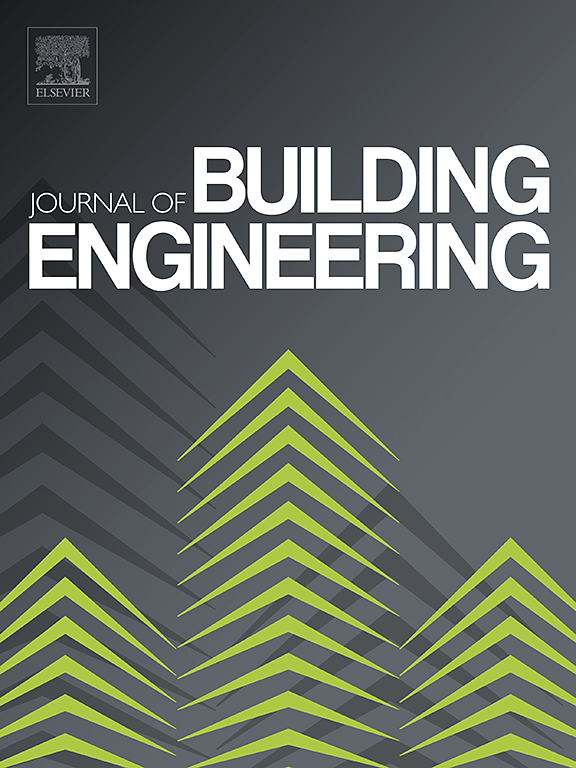Seismic performance analysis and damage evaluation of shear wall and frame shear wall structures under multi-dimensional excitations
IF 6.7
2区 工程技术
Q1 CONSTRUCTION & BUILDING TECHNOLOGY
引用次数: 0
Abstract
To systematically explore the seismic performance of shear walls and frame-shear wall structures under multi-directional seismic actions, three shear wall specimens and one frame-shear wall specimen are fabricated and the quasi-static loading tests are carried out. The shear wall specimens are loaded in oblique direction, in-plane direction, and out-of-plane direction, while the frame-shear wall specimen is loaded in the in-plane direction. The macroscopic damage phenomena of the specimens are analyzed to investigate the influence of the typical performance indicators such as crack propagation, hysteresis curves, skeleton curves, and stiffness degradation curves. Subsequently, the equation for calculating comprehensive damage indices, which can accurately reveal the damage evolution process and final damage severity of shear wall components, is proposed. Based on the calibrated experiments, the appropriate finite element software is used to simulate quasi-static loading from multiple angles on shear wall and frame-shear wall specimens. The time-history analysis are conducted on the frame-shear wall structural system from multiple angles to comparatively analyze the seismic performance and failure modes of the two types of structures under different loading angles. The results indicate that the bearing capacity, the energy dissipation capacity and the lateral stiffness of shear walls and frame-shear wall structures decrease as the loading angle increases. Significant changes in crack development and failure modes are observed under out-of-plane loading for both types of structures, with the structural damage degree increasing with larger angles. There is an urgent need for further analysis and enhancement of the seismic performance of these structures under multi-directional loading conditions.
求助全文
约1分钟内获得全文
求助全文
来源期刊

Journal of building engineering
Engineering-Civil and Structural Engineering
CiteScore
10.00
自引率
12.50%
发文量
1901
审稿时长
35 days
期刊介绍:
The Journal of Building Engineering is an interdisciplinary journal that covers all aspects of science and technology concerned with the whole life cycle of the built environment; from the design phase through to construction, operation, performance, maintenance and its deterioration.
 求助内容:
求助内容: 应助结果提醒方式:
应助结果提醒方式:


